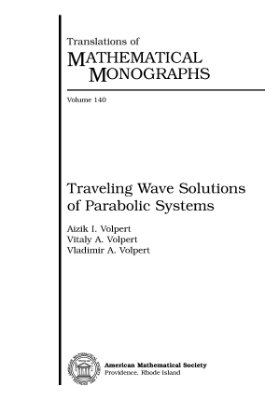AMS, 2000. - 455 pages.
The theory of traveling wave solutions of parabolic equations is one of the fast developing areas of mode mathematics. The history of this theory begins with the famous mathematical work by Kolmogorov, Petrovskii, and Piskunov and with works in chemical physics, the best known among them by Zel'dovich and Frank-Kamenetskii in combustion theory and by Semenov, who discovered branching chain flames.
Traveling wave solutions are solutions of special type. They can be usually characterized as solutions invariant with respect to translation in space. The existence of traveling waves appears to be very common in nonlinear equations, and, in addition, they often determine the behavior of the solutions of Cauchy-type problems.
From the physical point of view, traveling waves usually describe transition processes. Transition from one equilibrium to another is a typical case, although more complicated situations can arise. These transition processes usually "forget" their initial conditions and reflect the properties of the medium itself.
The theory of traveling wave solutions of parabolic equations is one of the fast developing areas of mode mathematics. The history of this theory begins with the famous mathematical work by Kolmogorov, Petrovskii, and Piskunov and with works in chemical physics, the best known among them by Zel'dovich and Frank-Kamenetskii in combustion theory and by Semenov, who discovered branching chain flames.
Traveling wave solutions are solutions of special type. They can be usually characterized as solutions invariant with respect to translation in space. The existence of traveling waves appears to be very common in nonlinear equations, and, in addition, they often determine the behavior of the solutions of Cauchy-type problems.
From the physical point of view, traveling waves usually describe transition processes. Transition from one equilibrium to another is a typical case, although more complicated situations can arise. These transition processes usually "forget" their initial conditions and reflect the properties of the medium itself.

